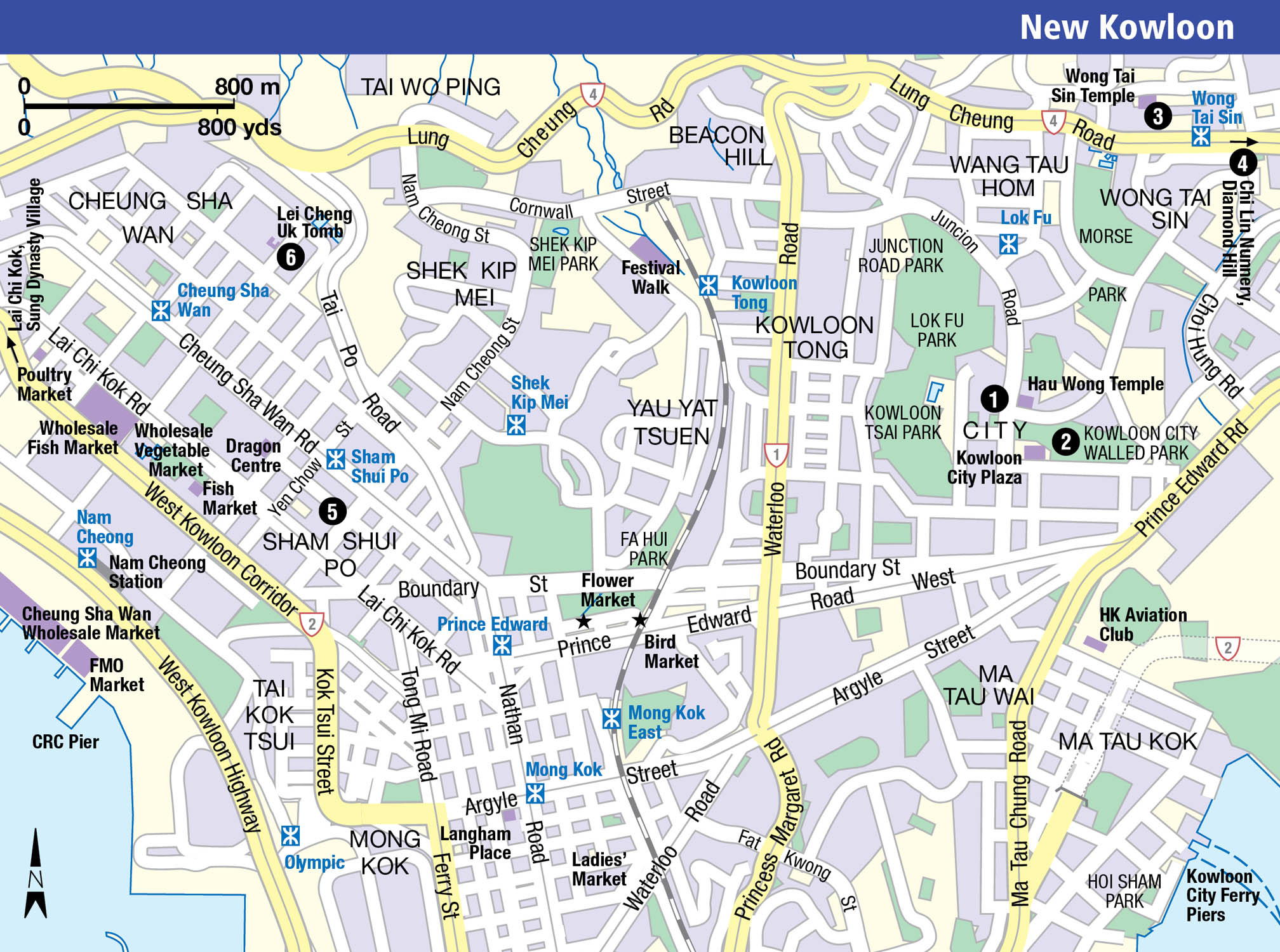Maps and Listings
Kowloon proper ends at Boundary Street in Mong Kok, which between 1860 and 1898 defined the frontier between Hong Kong and China. Although officially part of the New Territories, the districts immediately north of this street are more commonly known as New Kowloon. The densely populated neighbourhoods of Kwun Tong, Kowloon City, Wong Tai Sin and Sham Shui Po, wedged up against the mountains to the north, are occupied by housing estates, shopping malls and decaying factories and warehouses – this was the location of most of Hong Kong’s light industry until it shifted over the border to China in the 1980s. Many of the older buildings are being torn down and replaced with more upmarket residential towers and mega malls.
Passengers flying into Hong Kong used to have a close-up view of life in New Kowloon as they flew into the old airport at Kai Tak. A slinky new cruise terminal opened here in 2013, though it’s yet to regain its title as a major transport hub as only the very largest ships are currently docking here.
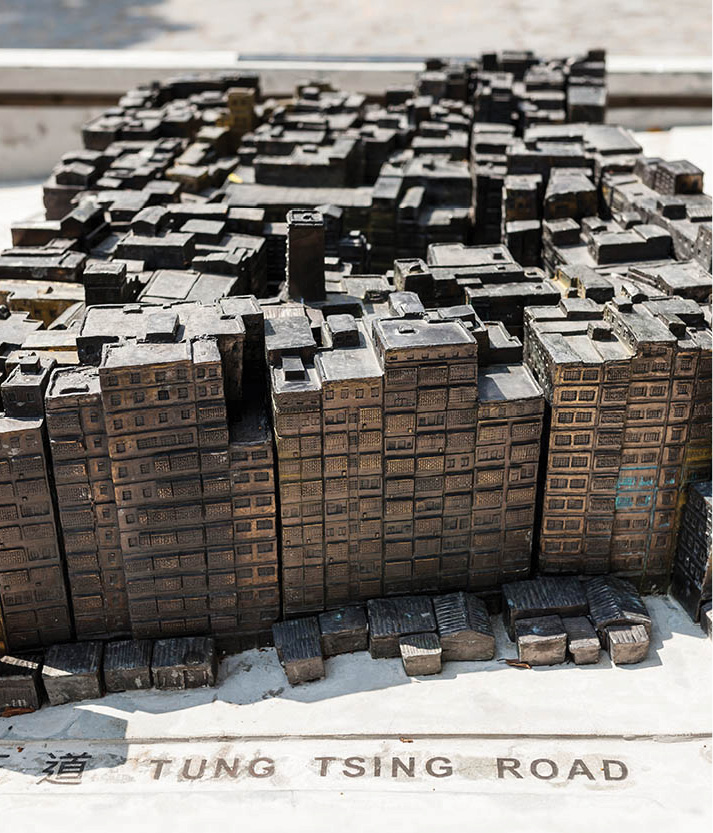
Kowloon Walled City Park, where the Kowloon Walled City once stood.
Ming Tang-Evans/Apa Publications
Kowloon City
Kowloon City 1 [map] is best seen on foot, starting at Lok Fu MTR Station. Walk up Wang Tau Hom East Road as far as Junction Road, then turn left and continue west. Along Junction Road, the Chinese Christian Cemetery on the left is a stark reminder of the lack of space in Hong Kong, with graves stacked up like sardines on concrete terraces.
Next door to the cemetery is the tiny Hau Wong Temple, with traditional roof tiles and incense spirals hanging from the rafters. Built in 1730, the temple is dedicated to Yang Liang Jie, a loyal and courageous general of the exiled Song dynasty’s boy-emperor Ping. The general’s birthday is celebrated on the 16th day of the sixth month on the lunar calendar. The temple-keeper acts as a medium interpreting the advice of Hau Wong by means of kay fook – praying for the god’s blessing.
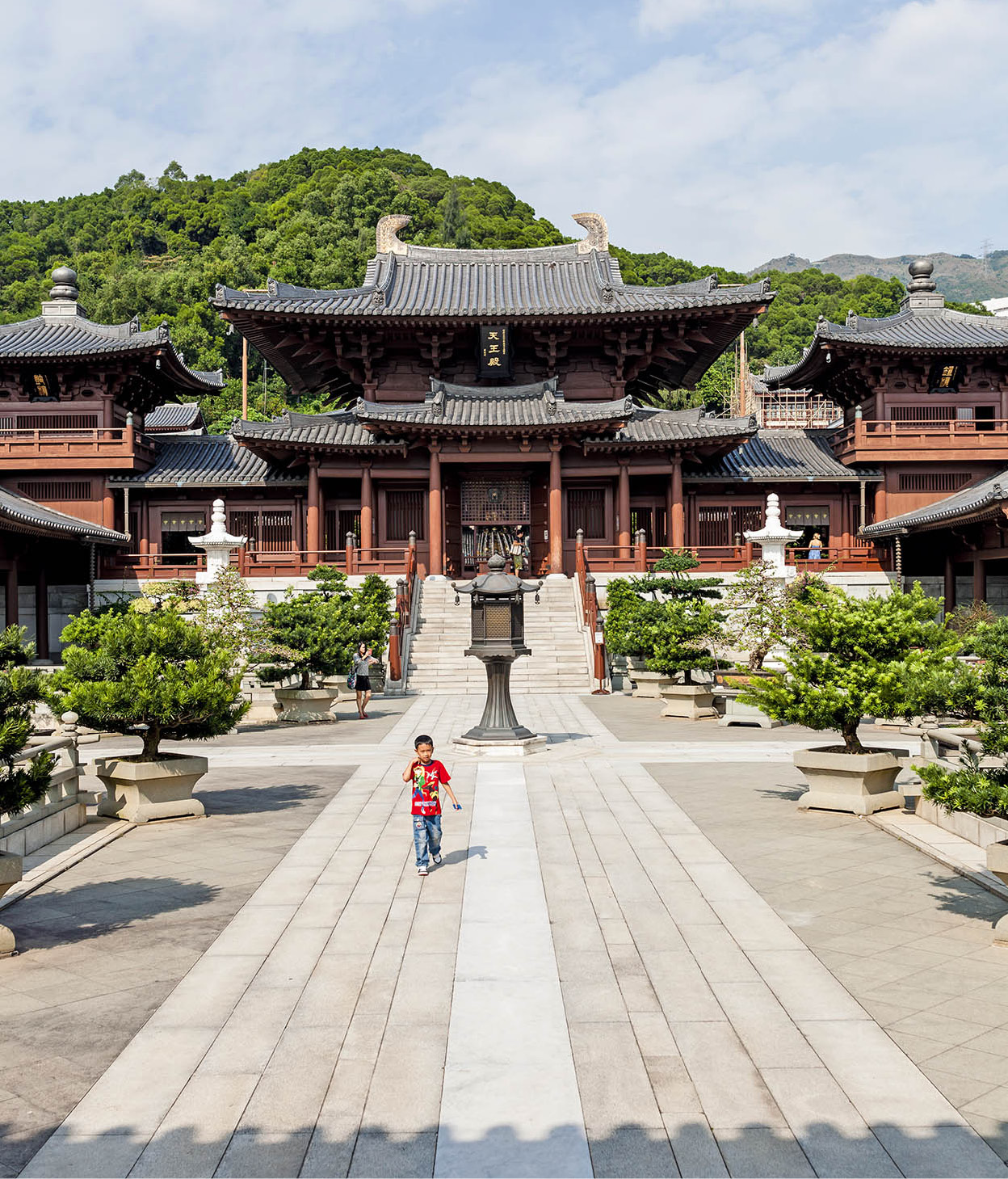
The Chi Lin Nunnery is the largest Buddhist nunnery in East Asia.
Ming Tang-Evans/Apa Publications
Remembering the Walled City
Continue past the temple for 10 minutes until the junction with Carpenter Road, then turn left and head past Kowloon City Plaza on the left to reach Kowloon Walled City Park 2 [map] (daily 6.30am–11pm; MTR Lok Fu). The park marks the area where the notorious Walled City stood until it was finally demolished in 1992.
The Walled City
In pre-colonial times, the site that was to become the notorious Walled City was occupied by a fortress. It continued to be used by the Chinese after 1841 (partly to monitor British activities), and when Britain leased the New Territories (which included this part of Kowloon) in 1898, the site was excluded. At first, the Qing-dynasty officials remained, but British troops were soon dispatched, and they were expelled.
Yet British law was never fully implemented within the walled compound, and it soon deteriorated into a semi-lawless enclave that was left to its own devices. After World War II, illegal low-rise blocks began to appear, resulting in a multi-storey squatter area with unauthorised electricity and water supplies. By the 1950s, the dank alleyways had become a real-life vice city – a squalid haven for drug addicts, triad gangs, illegal immigrants and brothels, as well as unlicensed doctors and dentists.
In true imperial style, the British simply turned a blind eye, but through the 1970s pressure mounted for them to act. Beijing vehemently opposed demolition plans, regarding it as Chinese territory, but eventually 35,000 residents were resettled in housing estates, and the entire block was razed to the ground, a process completed in 1992.
Opened in 1995 by then Governor Chris Patten, it is an attractive space in the middle of dowdy swathes of grey urban decline. Modelled on the Jiangnan garden style of the early Qing dynasty, it features a chess garden as well as the Mountain View Pavilion, from which Lion Rock looms large to the north. The southern gate of the old Walled City has been preserved, along with two old cannons, while an information centre contains a photographic exhibition detailing the peculiar history of the city, its demise and the subsequent construction of the park, as well as displaying relics found within the walls.
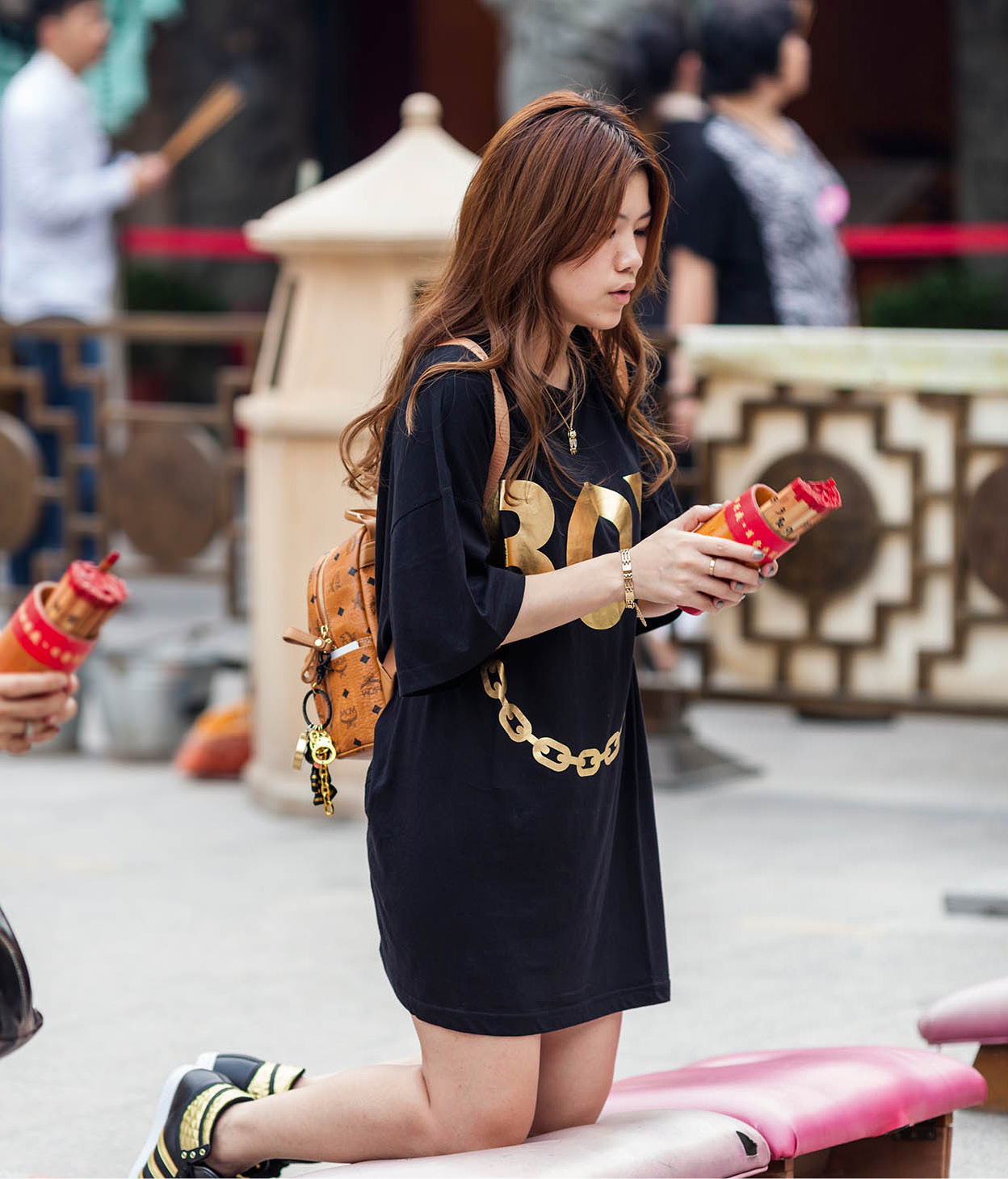
Young woman at Wong Tai Sin Temple with a bamboo chim stick, used for fortune telling.
Ming Tang-Evans/Apa Publications
Wong Tai Sin Temple 3 [map]
Address: 2 Chuk Yuen Village, Wong Tai Sin. www.siksikyuen.org.hk
Tel: 2327 8141
Opening Hrs: daily 7am–5.30pm (all night on Lunar New Year’s Eve)
Entrance fee: free
Transport: MTR Wong Tai Sin
Probably the liveliest and most colourful place of worship in Hong Kong, and the most rewarding for outsiders to visit, is Wong Tai Sin Temple, which sits opposite the eponymous MTR station.
Wong Tai Sin, the Daoist god of healing, is said to have discovered the secret of transforming cinnabar (vermilion, a red mercuric sulphide) into an elixir for immortality. A painting of the god was brought to Hong Kong from China in 1915, and was first placed in a small temple in Wan Chai, before being moved to Wong Tai Sin to benefit, it was said, from the feng shui between formidable Lion Rock and the sea. Since Wong Tai Sin is also the god of good fortune, the Chinese, who are too cautious to rely solely on luck, flock to the temple to ask him for advice on all matters, including such worldly concerns as horse-racing and stockmarket tips. The sound of rattling chim – a container holding dozens of fortune sticks – resounds all day long. English-speaking fortune-tellers will also provide chapter and verse on the future using a number of other methods. They are especially good (from a parental point of view) with children.
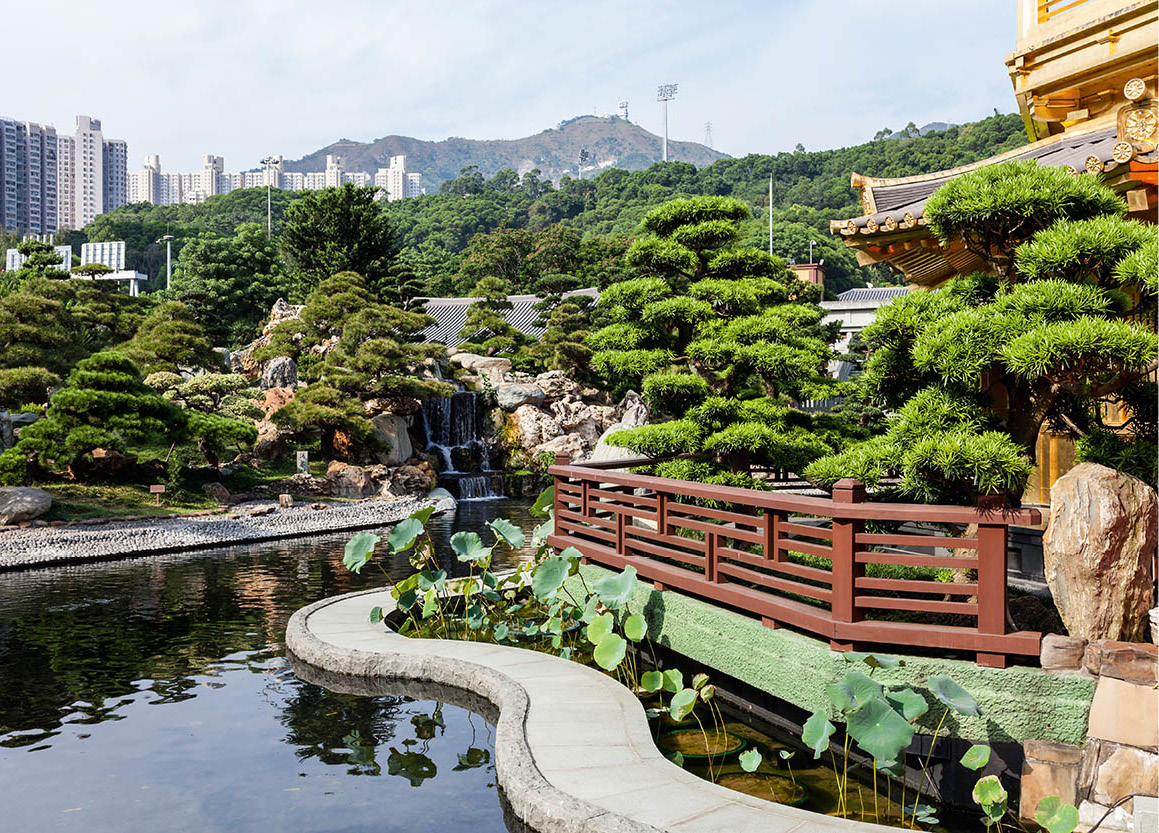
Nian Lin Garden.
Ming Tang-Evans/Apa Publications
The optimum times to visit are during Chinese New Year or at Wong Tai Sin’s birthday on the 23rd day of the eighth lunar month (between mid-September and mid-October), when thousands of worshippers crowd into the temple to light incense, burn paper money and rattle chim sticks.
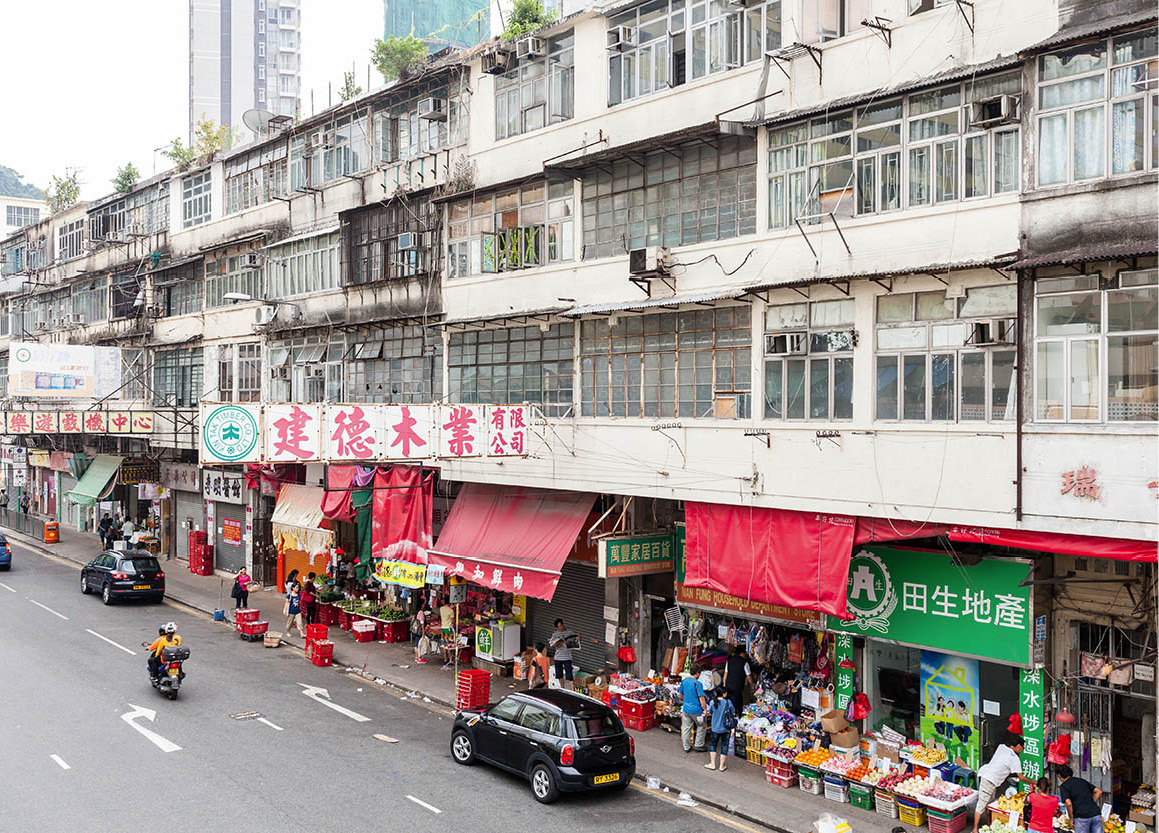
A street in Sham Shui Po.
Ming Tang-Evans/Apa Publications
Chi Lin Nunnery 4 [map]
Address: 5 Chi Lin Drive, Diamond Hill. www.chilin.org
Tel: 2354 1888
Opening Hrs: daily 9am–4.30pm, garden 6.30am–7pm
Entrance fee: free
Transport: MTR Diamond Hill
One MTR stop to the east of Wong Tai Sin, the Chi Lin Nunnery is the largest Buddhist nunnery in East Asia. Nuns have lived here since 1937, but today’s structure dates only from 1998, having been rebuilt in wood without the use of a single metal nail. The complex comprises a number of Buddhist halls and the tranquil garden with lotus ponds in front of the main entrance.
The Hall of Celestial Kings houses a statue of the Maitreya Buddha (Milefo), the Buddha of the Future and a heavenly being who will descend to Earth to save humanity. Guardians of the Four Directions surround him. On the left is a hall commemorating the goddess of mercy, Guanyin, who sits inside a grotto. On the right is Baishiyaja Guru (Medicine Master), accompanied by the Sun and Moon Bodhisattvas, Buddhist redemption deities. The most impressive statue is the golden Sakyamuni Buddha, resting on a lotus altar in the Main Hall. Across the road, the Nian Lin Garden (daily 7am–9pm, free) is one of the most beautiful Chinese gardens in Hong Kong. Also following Tang aesthetics, the garden features ornamental rocks, pavilions, water features and beautifully-shaped rare trees. A Buddhist vegetarian restaurant is hidden behind a waterfall.
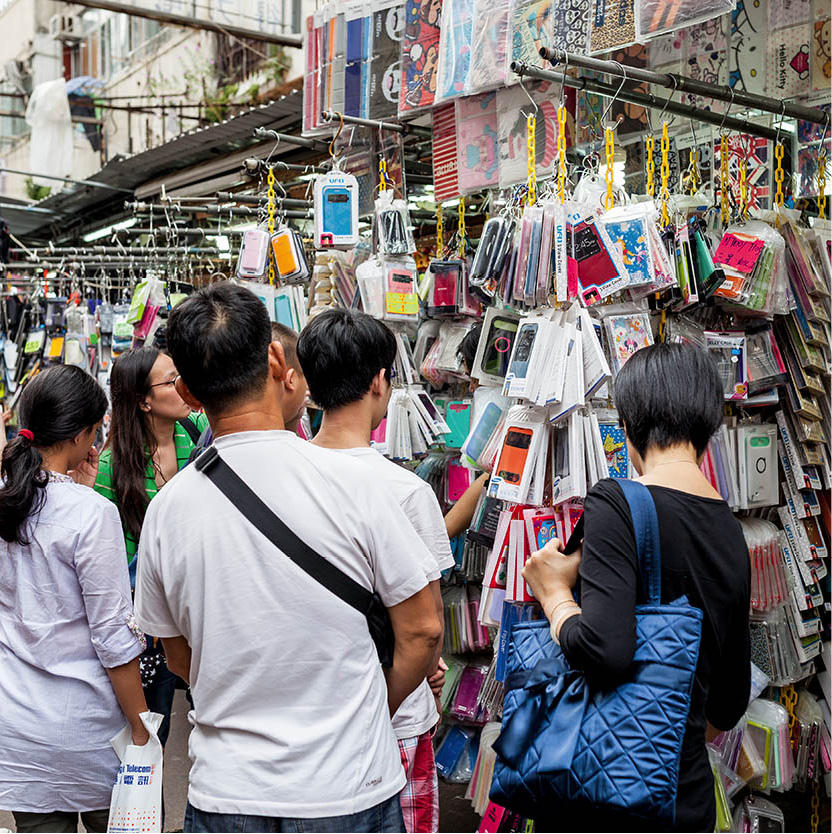
Stall selling electronic merchandise in Sham Shui Po.
Ming Tang-Evans/Apa Publications
Below Lion Rock
The relentless sea of high-rises starts thinning to the north of New Kowloon, around Kowloon Tong MTR station. This area, wedged between Kowloon City and Sham Shui Po, is the wealthiest in Kowloon and is full of luxury low-rise housing, plus the highest concentration of kindergartens, schools and universities in the city – amounting to over 200 institutions. In a typically odd Hong Kong style, the area is also famous for its “love hotels”, discreetly situated behind high walls, with gates manned by security guards. Rooms at 41 Cumberland Avenue, Bruce Lee’s former home, were also rented by the hour until recently. It’s no longer a brothel, but calls for the property to be converted into a permanent tribute to the kung fu star have so far been unheeded.
For visitors there’s more of interest at Festival Walk, a massive mall above Kowloon Tong MTR station, which has restaurants, an 11-screen cinema and an ice rink.
Sham Shui Po
Sham Shui Po 5 [map] is situated to the west of Kowloon Tong, well off the tourist trail but nonetheless easily accessed by MTR. The area is as good a place as any to get an idea of the development of Hong Kong’s architecture, from grim H-block resettlement estates hastily constructed in the 1950s to clean, modern apartment blocks erected in the 1980s. Sham Shui Po Police Station, at Lai Chi Kok Road and Yen Chow Street, is one of Kowloon’s remaining colonial pre-war buildings. During World War II, the station was occupied and used by the Japanese to interrogate prisoners of war, and nowadays residents report a ghostly British soldier wandering around at night.
If you know your way around electronic devices and computers, Sham Shui Po is high-tech heaven – even though much of it looks like a flea market. Arcades and stalls selling computers and related merchandise can be found on Yen Chow Street and Ap Liu Street, where there are also street stalls selling cheap goods – from old stereos and vinyl records to broken computers, TVs and household appliances. Many of the latest gismos, from game consoles to DVD players, are parallel imports – sui foh – goods imported directly from other countries available at lower prices, but without guarantees or instructions. Rip-offs do occur, and it’s advisable to check items before buying. The Dragon Centre on Yen Chow Street is a 10-storey mall with ice rink on the eighth floor, and a children’s entertainment arcade.
Lei Cheng Uk Tomb 6 [map]
Address: 41 Tonkin Street, Sham Shui Po
Tel: 2386 2863
Opening Hrs: Mon–Wed, Fri–Sat 10am–6pm
Entrance Fee: free
Transport: no. 2 from Kowloon Star Ferry Pier, MTR Cheung Sha Wan
The Lei Cheng Uk Housing Estate is home to one of Hong Kong’s archaeological treasures, discoveries made in 1955 by workers excavating the hillside. The tomb here is a Han-dynasty burial vault dating back to between AD 100 and 200, when Kowloon was under the administrative control of the Wu Empire, which took control of southern China in the period following the collapse of the Han Empire. Four barrel-vaulted chambers form a cross under a domed vault, and there are a few funerary exhibits on show. A 3-D animation helps you to visualise the tomb.
New Kowloon: Restaurants
Price Categories
Prices for a three-course dinner per person with one beer or glass of house wine:
$ = under HK$150
$$ = HK$150–300
$$$ = HK$300–500
$$$$ = over HK$500
Kowloon City is known for its unusual density of Thai and ethnic Chinese restaurants. No fancy dining here – you will probably share a table – but fearless foodies will enjoy the off-the-tourist-trail atmosphere. Festival Walk in Kowloon Tong has a good selection of restaurants and cafés to suit all budgets. A little out-the-way, but with great views back over Hong Kong Island, is Yau Tong, which has a waterside strip of lively seafood restaurants where you pick your catch straight from the tank.
Cantonese
Jasmine
G/F, Festival Walk, Kowloon Tong. Tel: 2333 0222. Open: L & D daily. $$
A light, modern approach to Chinese food, with the emphasis on plenty of vegetables and tofu, and a good selection of desserts and teas.
Tso Choi Koon
17–19A Nga Tsin Wai Rd, Kowloon City. Tel: 2383 7170. Open: L & D daily. $
A true home-style Cantonese restaurant. Opt for glutinous congee, fried chicken or fish. No English spoken. Definitely for the adventurous.
Other Chinese
Muslim Restaurant
1 Lung Kong Rd, Kowloon City. Tel: 2382 2822. Open: L & D daily. $
Straightforward eatery catering to Chinese Muslims, with halal dishes typical of Xinjiang province. Specialities include mutton with scallions, a range of grilled kebabs and some very filling stuffed breads.
American
Dan Ryan’s Chicago Grill
L/G, Festival Walk, Kowloon Tong. Tel: 2265 8811. Open: L & D daily. $$$
If you’re hungry, there’s a menu of huge portions of consistently good food. If you just want a glass of Miller beer or a coffee, that’s fine.
Thai
Golden Orchid
12 Lung Kong Rd, Kowloon City. Tel: 2383 3076. Open: L & D daily. $
The area south of the Walled City Park is home to a large Thai community, with many excellent restaurants.
Wong Chun Chun
23 Tak Ku Ling Rd, Kowloon City. Tel: 2716 6269. Open: L & D daily. $$
Identified by a purple-and-gold exterior, this three-storey palace of Thai food is located on the corner of Tak Ku Ling and Nga Tsin Wai roads. Enjoy a royal feast at reasonable prices.
